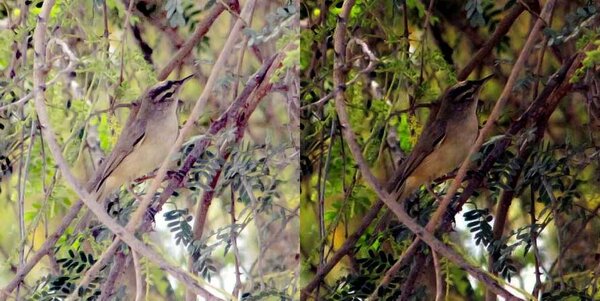I am a big fan of written descriptions of field sightings.
Forcing myself to write down my observations and present them in an
organised manner has helped me to learn to make better use of however
little time I get with a bird in the field. Unless I did this
consciously, it was all too easy to spend time looking at birds without
seeing very much.
Written descriptions are not always reliable, and the reliable ones not
always conclusive. A photograph, regardless of the quality, can often
serve to clear up an incomplete description; but photographs can't be
the beginning and end of identification, because they come with their
own problems.
Here's
an old thread from delhibirdpix
that shows how photographs can mislead even a succession of expert
observers. The ingredients were all in place: a location that has an
extraordinary (and well-deserved) reputation for being a vagrant-trap,
a small warbler with an unmistakable black brow, and only one species
anywhere in the region matching that description.

But two and two did not add up to Black-browed Reed Warbler in this
case. The identification hinged entirely on the black brow, which turned
out to be an artifact introduced while lightening a dark photograph, as
shown in the comparison above. The bird was (probably) a Booted Warbler
with an entirely unremarkable pale brow.
Here's
another post
(from about the same time) about a similar problem.